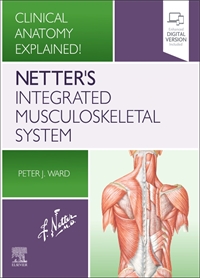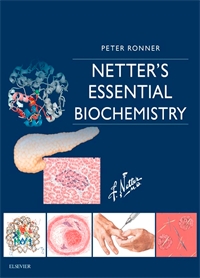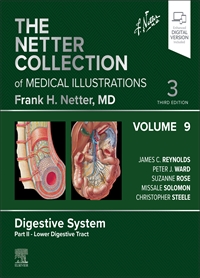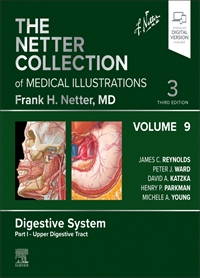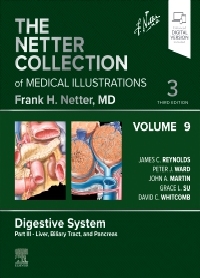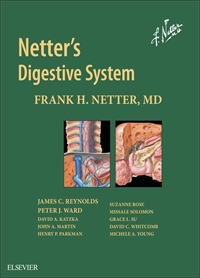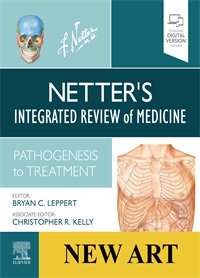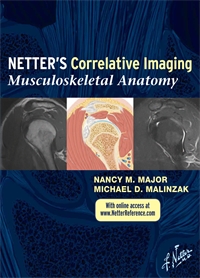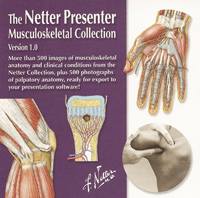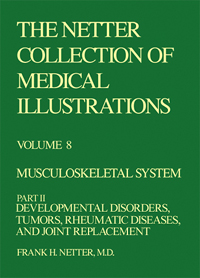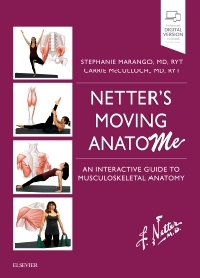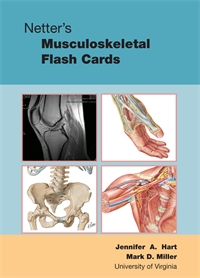Netters Integrated Musculoskeletal System
Clinical Anatomy Explained
Author: Peter Ward
ISBN: 9780323696616
- Page 2: Anatomical Position of the Body
- Page 4: Body Planes and Terms of Relationship
- Page 5: Terms of movement
- Page 7: Terms of movement (continued)
- Page 9: Skull
- Page 10: Bones of the Skull
- Page 12: Vertebral Column
- Page 12.1: Cervical Vertebrae
- Page 13: Cervical Vertebrae: Atlas and Axis Spine: Osteology
- Page 14: Thoracic Vertebrae
- Page 15: Thoracic Vertebrae
- Page 16: Sacrum and Coccyx Osteology
- Page 17: Osteology: Thorax
- Page 18: Clavicle, scapula and humerus
- Page 18: Bones of Wrist and Hand
- Page 19: Bones of the forearm and elbow joint
- Page 20: Coxal Bone
- Page 22: Osteology of the Femur
- Page 23: Osteology of the Leg and Knee
- Page 23.1: Tibia and Fibula
- Page 24: Bones of Foot
- Page 24.1: Synovial Joint
- Page 25: Temporomandibular Joint
- Page 25.1: Ligaments of elbow
- Page 26: Vertebral Ligaments: Lumbar Region Ligaments of the Spinal Column
- Page 27: Joints of the Thoracic Spine
- Page 27.1: Ribs and Sternocostal Joints
- Page 28: Joints and Ligaments of the Shoulder
- Page 29: Detecting Acromioclavicular Lesions
- Page 29.1: Glenohumeral Dislocations
- Page 30: Ligaments of Elbow
- Page 30: Dislocation and Subluxation of the Radius
- Page 30: Cross Section of Wrist: Carpal Tunnel
- Page 31: Joints and ligaments of the wrist and hand
- Page 32: Bones and Ligaments of Pelvis
- Page 33: Hip Joint
- Page 34: Leg: Knee Joint and Ligaments
- Page 34: Rupture of the Anterior Cruciate Ligament
- Page 34.1: Tibia and Fibula
- Page 35: Ligaments of the Ankle Joint Ligaments and Tendons of Ankle
- Page 36: Capsules and Ligaments of Metatarsophalangeal and Interphalangeal Joints
- Page 36: Major Sprains and Sprain Fractures
- Page 38: Extrinsic muscles of the back
- Page 38.1: Intrinsic muscles of the back
- Page 40: Muscle Groups of the Anterior Neck
- Page 41: Muscles of Respiration
- Page 42: Muscles of the Shoulder
- Page 43: Musculature of the arm
- Page 44: Muscles of the Hand
- Page 46: Major Muscle Groups of the Torso
- Page 48: Major Muscle Groups of the Torso (CONTINUED)
- Page 49: Gluteal and posterior thigh muscles
- Page 50: Muscle Groups of the Thigh
- Page 51: Muscles of the anterior and lateral compartments of the leg
- Page 52: Muscles of the dorsum of the foot
- Page 52.1: Muscles of the dorsum of the foot
- Page 54: Nervous System: Organization
- Page 54.1: Brainstem
- Page 55: Accessory Nerve (XI): Schema
- Page 55: Clinical Findings in Cranial Nerve XI Damage
- Page 56: Spinal Nerve Origin: Cross Sections Exit of Spinal Nerves Spinal Nerves
- Page 57: Cervical Plexus
- Page 58: Brachial Plexus: Schema
- Page 59: Scapulohumeral Dissection
- Page 60: Nerves of Upper Limb
- Page 62: Thoracoabdominal Nerves Course of Typical Thoracic Nerve Innervation of Abdomen and of Perineum
- Page 63: Nerves of the Pelvis
- Page 63.1: Femoral Nerve and Lateral Femoral Cutaneous Nerves
- Page 64: Obturator Nerve
- Page 65: Nerves of Buttock
- Page 66: Sciatic Nerve (L4, L5; S1, S2, S3) and Posterior Femoral Cutaneous Nerve (S1, S2, S3) Sciatic Nerve and Posterior Cutaneous Nerve of Thigh
- Page 66.1: Nerves of the Lower Leg
- Page 67: Perineum: Nerves
- Page 69: Cardiovascular System Overview
- Page 70: Arteries and Pulses
- Page 71: Arteries to brain
- Page 71.1: Subclavian Artery
- Page 72: Arteries of upper limb
- Page 73: Surgery of Aorta
- Page 74: Arteries of the Thorax and Abdomen
- Page 75: Arteries of Thigh and Knee: Schema
- Page 76: Avascular Necrosis
- Page 77: Major systemic veins of the cardiovascular system
- Page 78: Superficial Veins and Cutaneous Nerves of Neck
- Page 78.1: Surface Anatomy: Superficial Veins and Nerves
- Page 79: Veins of the Internal Thoracic Wall
- Page 79.1: Superficial Veins and Cutaneous Nerves of Lower Limb Superficial Nerves and Veins of Lower Limb: Anterior View Superficial Nerves and Veins of Lower Limb: Posterior View
- Page 80: Veins of Posterior Abdominal Wall Venous Drainage of the Abdomen
- Page 80: Massive Embolization
- Page 81: Overview of the Lymphatic System
- Page 82: Lymph vessels and nodes of the lower limb and upper limb
- Page 83: Lymphatic Drainage of Breast
- Page 85: Classification of Epithelia With Schematic of Nonkeratonized Stratified Squamous Epithelium As Seen With Light Microscope
- Page 86: Histology of Connective Tissue (C and D reused with permission from Ovalle W, Nahirney P. Netter's Essential Histology, 3rd edition, Elsevier, 2021)
- Page 87: Collagen Synthesis
- Page 88: Types III and IV Osteogenesis Imperfecta
- Page 89: Characteristics of Marfan Syndrome
- Page 90: Formation and Composition of Proteoglycan
- Page 90.1: Higher Magnification Light Micrograph of Hyaline Cartilage From the Trachea
- Page 91: Structure of Three Types of Cartilage
- Page 91.1: Structure of Bone
- Page 92: Light Micrograph Showing the Periosteum On the Surface of a Bone (Decalcified) From an Elderly Person
- Page 92: A. Secondary Osteon and B. Microscopic Structure of Mature Long Bone Basic Science of Bones
- Page 93: Healing of Fracture
- Page 95: A. Centrifuged Blood Sample and B. Formed Elements of Blood
- Page 97: The muscular system
- Page 97.1: Sarcoplasmic Reticulum and Initiation of Muscle Contraction
- Page 98: Schematic Showing Interaction of Myosin and Actin Filaments at Rest and During Contraction
- Page 99: Biochemical Mechanics of Muscle Contraction
- Page 99.1: Muscle Length-Muscle Tension Relationships
- Page 100: Sarcoglycan Complex and Sarcomere Proteins
- Page 101: Regeneration of ATP for Source of Energy in Muscle Contraction
- Page 102: Initiation of Muscle Contraction by Electric Impulse and Calcium Movement
- Page 103: Muscle Fiber Types
- Page 106: Light Micrograph of a Muscle Spindle In the Equatorial Region
- Page 106: Muscle and Joint Receptors and Muscle Spindles
- Page 107: Histology of the Myocardium: Schematic Views of Cardiac Muscle
- Page 107.1: Smooth Muscle Structure
- Page 108: Excitation and Contraction Coupling of Smooth Muscle
- Page 109: Electron Micrograph of Smooth Muscle Cells Close to Nerve Axons In Transverse Section
- Page 110: Neuronal Structure and Synapses
- Page 111: Neuronal Cell Types
- Page 112: Mechanisms of Molecular Signaling in Neurons
- Page 112.1: Neuronal Resting Potential Resting Membrane Potential (RMP)
- Page 113: Neuronal Membrane Potential and Sodium Channels
- Page 114: Propagation of the Action Potential
- Page 115: Conduction Velocity
- Page 116: AIDP (Guillain-Barre Syndrome)
- Page 117: A. Neuromuscular Neurotransmission and B. Physiology of Neuromuscular Junction
- Page 118: Lambert-Eaton Syndrome
- Page 119: Myasthenia Gravis: Clinical Manifestations
- Page 122: Age of the Embryo Ovulation, Fertilization, and Migration Down the Uterine Tube Impmlantation and Extraembryonic Membrane Formation
- Page 123: Formation of Intraembryonic Mesoderm Gastrulation
- Page 123.1: Vertebrae Body Plan after 4 weeks The Vertebrate Body Plan
- Page 124: Formation of the Brain
- Page 125: Defects of the Spinal Cord and Vertebral Column
- Page 126: Development of the Brain
- Page 127: A. Differentiation of somites into myotomes, sclerotomes, and dermatomes; B. Alar and basal plates
- Page 128: First and Second Cervical Vertebrae at Birth - Development of Sternum
- Page 129: Development of Skeletal Muscle Fibers
- Page 130: Progressive Stages in Formation of Vertebral Column, Dermatomes, and Myotomes
- Page 131: Mesenchymal Primordia at 5 and 6 Weeks
- Page 132: Partial sacralization of L5 on the right side
- Page 133: Embryology: Limb Bud Rotation
- Page 134: Anomalies of the Digits
- Page 135: Achondroplasia
- Page 136: Gigantism and Acromegaly
- Page 137: Upper Limb Malformations
- Page 138: Growth and Ossification of Long Bones (Humerus, Midfrontal Sections) Endochondral Ossification In a Long Bone
- Page 139: Regions of the Epiphyseal Plates
- Page 140: Injury to Growth Plate (Salter-Harris Classification, Rang Modification)
- Page 141: Development of Three Types of Diathrodial (Synovial) Joints
- Page 141: Congenital Clubfoot
- Page 143: Spinal Nerve Origin: Cross Sections Exit of Spinal Nerves Spinal Nerves
- Page 144: Cerebrum: Lateral Views Organization of the Brain: Cerebrum Superolateral Surface of Brain Surface Anatomy of the Forebrain: Lateral View
- Page 145: Medial Surface of Brain Cerebrum: Medial Views Surfaces of Cerebrum
- Page 146: Horizontal Sections Through the Forebrain: Anterior Commissure and Caudal Thalamus
- Page 147: Major Cortical Association Bundles
- Page 148: Thalamocortical Radiations
- Page 149: Horner's Syndrome
- Page 149: Hypothalamus and Hypophysis
- Page 150: Cross Sections of the Midbrain
- Page 151: Cross Sections of the Pons
- Page 152: Cerebellum
- Page 154: Cross Sections of the Medulla
- Page 155: Sections Through Spinal Cord At Various Levels Spinal Cord Cross Sections: Fiber Tracts Spinal Cord White and Gray Matter Spinal Cord Cross Sections: Fiber Tracts
- Page 156: Circulation of Cerebrospinal Fluid
- Page 157: Hydrocephalus
- Page 157: Pyramidal System
- Page 158: Primary Motor Neuron Disease
- Page 159: Corticobulbar Tract
- Page 160: Hypoglossal Nerve (CN-XII)
- Page 161: Central Versus Peripheral Facial Paralysis
- Page 162: Rubrospinal Tract
- Page 162.1: Vestibulospinal Tracts
- Page 163: Reticulospinal and Corticoreticular Pathways
- Page 164: Tectospinal Tract and Interstitiospinal Tract
- Page 165: Cutaneous Receptors
- Page 166: Somatosensory System: The Dorsal Column System and Epicritic Modalities
- Page 167: Somatosensory System: The Spinothalamic and Spinoreticular Systems and Protopathic Modalities
- Page 168: Cervical Spine Injury: Incomplete Spinal Cord Syndromes
- Page 169: Brainstem
- Page 170: Blood Supply of the Brain
- Page 171: Somatosensory System: Spinocerebellar Pathways
- Page 173: Cerebellar Anatomy: Internal Features
- Page 173.1: Cerebellar Cortex
- Page 174: Cerebellar Efferent Pathways
- Page 175: Cerebellar Motor Examination
- Page 176: Motor Tracts, Basal Ganglia, and Dopamine Pathways
- Page 177: Basic Basal Ganglia Circuitry and Neurotransmitters
- Page 178: Parkinsonism: Symptoms and Defect
- Page 179: Chorea
- Page 181: Cervical Vertebrae
- Page 181.1: Cervical Vertebrae: Uncovertebral Joints
- Page 182: Cervical Vertebrae: Atlas and Axis Spine: Osteology
- Page 183: Thoracic Vertebrae
- Page 183.1: Lumbar Vertebrae and Intervertebral Disc Spine: Osteology
- Page 184: Sacrum and Coccyx Osteology
- Page 186: Stable and Unstable Spinal Injuries (Trauma, Cervical Vertebral Fractures, Spondylosis)
- Page 188: Intervertebral Disc
- Page 189: Intervertebral Disc
- Page 190: Vertebral Column
- Page 191: Vertebral Ligaments: Lumbosacral Region
- Page 192: Internal Craniocervical Ligaments
- Page 193: (A) Lumbar region of back: cross-section of transverse section through lumbar region (L2) of back; (B) muscles of back: superficial layer
- Page 195: Muscles of Back: Intermediate Layers Spenius and Erector Spinae Muscles
- Page 197: Muscles of Back: Deep Layers Transversospinal, Interspinal, Intertransverse, and Suboccipital Muscles Deep Muscles: Posterior Neck and Back
- Page 199: Suboccipital Triangle
- Page 199.1: The Spinal Meninges and Their Relationship to the Spinal Cord
- Page 200: Lumbar Puncture and Epidural Anesthesia
- Page 201: Spinal Nerves and Sensory Dermatomes
- Page 203: Spinal Nerve Cross Section
- Page 204: Lumbar Puncture and Epidural Anesthesia
- Page 205: Arteries of the Spinal Cord
- Page 206: Veins of Spinal Cord and Vertebrae Veins of Spinal Cord and Vertebral Column Venous Drainage of Spinal Cord and Vertebral Column
- Page 208: Humerus and Scapula: Insertions and Origins
- Page 209: Types of Fracture
- Page 210: Shoulder: Glenohumeral Joint
- Page 212: Dislocation of the Glenohumeral Joint
- Page 213: Biceps, Tendon Tears, and SLAP Lesions: Types of Tears
- Page 214: Adhesive Capsulitis of Shoulder (Frozen Shoulder)
- Page 214.1: Bones of Forearm Osteology of the Forearm
- Page 215: Bony Attachments of Muscles of Forearm
- Page 216: Ligaments of Elbow Ligaments of the Right Elbow Joint
- Page 217: Extension / Compression (Colles') Fracture
- Page 217.1: Topographic Anatomy, Bones, and Origins and Insertions of the Hand: Anterior and Posterior Views
- Page 218: Fracture of Scaphoid
- Page 219: Ligaments of the Wrist
- Page 219.1: Metacarpophalangeal and Interphalangeal Ligaments Metacarpophalangeal and Interphalangeal Joints
- Page 223: Upper Limb Muscles Originating from the Lateral Chest Wall
- Page 225: Muscles of the Rotator Cuff
- Page 226: Natural History of Calcified Deposits In Rotator Cuff
- Page 229: Arm Muscles With Portions of Arteries and Nerves Muscles of Arm: Anterior Views
- Page 229.1: Biceps, Tendon Tears, and SLAP Lesions: Presentation and Physical Examination
- Page 230: Arm Muscles With Portions of Arteries and Nerves Muscles of Arm: Posterior View
- Page 232: Olecranon Fracture
- Page 232.1: Arm Muscles With Portions of Arteries and Nerves Muscles of Arm: Posterior View
- Page 233: Epicondylitis and Olecranon Bursitis
- Page 236: Muscles of the Forearm
- Page 237: Epicondylitis and Olecranon Bursitis
- Page 239: Extensor Indicis Proprius Extensor Tendons at the Wrist
- Page 240: Stenosing Tenosynovitis of Flexor Tendons of Fingers (Trigger Finger) Ganglion of Wrist
- Page 240.1: Stenosing Tenosynovitis of Flexor Tendons of Fingers (Trigger Finger) Ganglion of Wrist
- Page 241: Dupuytren Disease
- Page 242: Muscles: Upper Limb
- Page 245: Finger Injuries
- Page 246: Dermal Segmentation of Upper Limb
- Page 247: Brachial Plexus: Schema
- Page 248: Scapular, Axillary and Radial Nerves
- Page 249: Radial Nerve in Forearm
- Page 250: Common Sites of Upper Extremity Nerve Entrapment
- Page 251: Musculocutaneous Nerve
- Page 252: Ulnar Nerve
- Page 253: Common Sites of Upper Extremity Nerve Entrapment
- Page 254: Median Nerve
- Page 255: Common Sites of Upper Extremity Nerve Entrapment
- Page 256: Brachial Plexus And-or Cervical Nerve Root Injuries at Birth
- Page 257: Autonomic Nerves in Neck
- Page 258: Axillary Artery and Anastomoses Around Scapula
- Page 259: Axillary Artery and Anastomoses Around Scapula
- Page 260: Arteries of the Arm and Forearm
- Page 261: Muscles of the Hand Wrist and Hand: Superficial Radial Dissection
- Page 262: Surface Anatomy: Superficial Veins and Nerves
- Page 263: Lymphatic Drainage
- Page 266: Bones and Ligaments of the Pelvis
- Page 267: Osteology and Attachments of the Hip and Thigh
- Page 269: Hip Joint
- Page 269.1: Fracture of Femoral Neck and Intertrochanteric Fracture of Femur
- Page 270.1: Dislocation of the Hip
- Page 271: Osteology and Attachments of the Leg and Knee
- Page 272: Joints and Ligaments of the Knee
- Page 273: Medial and Lateral Views of the Knee
- Page 275: Valgus, Varus, Anterior and Posterior Instabilities of the Knee
- Page 277: Ankle and Foot: Ankle Joints and Ligaments
- Page 278: Bones of Foot
- Page 278: Calcaneus
- Page 279: Major Sprains and Sprain Fractures
- Page 279.1: Major Sprains and Sprain Fractures
- Page 280: Tendon Insertions and Ligaments of Sole of Foot Ligaments and Tendons of Foot: Plantar View
- Page 281: Lesser Toe Deformities (Claw Toe, Hammertoe, and Mallet Toe)
- Page 282: Phases of Gait
- Page 283: Gluteal Muscles
- Page 286: Psoas and Iliacus Muscles
- Page 287: Muscles of the Front of the Hip and Thigh
- Page 288: Septic Bursitis and Arthritis
- Page 289: Disorders of the Leg and Knee Subluxation and Dislocation of Patella
- Page 292: Muscles of Back of Hip and Thigh Muscles of Hip and Thigh: Posterior Views
- Page 294: Muscles, Arteries, and Nerves of the Leg: Posterior View
- Page 295: Muscles, Arteries, and Nerves of the Leg: Anterior View
- Page 296: Synovial Tendon Sheaths at Ankle Tendon Sheaths of Ankle
- Page 297: Calcaneal Tendon Rupture
- Page 300: Superficial Dissection of Muscles of the Dorsum of the Foot
- Page 304: Plantar Fasciitis
- Page 305: Muscles, Arteries, and Nerves of the Sole of the Foot: Superficial Dissection and First Layer
- Page 308: Osgood-Schlatter Lesion
- Page 309: Segmental Sensory Innervation (Dermatomes) of the Lower Limb
- Page 310: Nerves of Back
- Page 311: Lumbar, Sacral, and Coccygeal Plexuses
- Page 312: Femoral Nerve and Lateral Femoral Cutaneous Nerves
- Page 313: Obturator Nerve
- Page 314: (A) Nerves of the buttock and (B) sciatic nerve and posterior femoral cutaneous nerve
- Page 315: Trendelenberg Test
- Page 316: Common Peroneal Nerve (L4, L5; S1, S2) Common Fibular (Peroneal) Nerve
- Page 317: Tibial Nerve (L4, L5; S1, S2, S3)
- Page 319: Innervation of Blood Vessels: Schema
- Page 319.1: Femoral Sheath and Inguinal Canal Inguinal Canal
- Page 320: Arteries and Nerves of Thigh: Anterior Views Superficial Dissections
- Page 321: A) Arteries of the thigh: anterior view with deep dissection and schema. (B) Arteries of the femoral head and neck
- Page 322: Arteries of the Knee, Leg, and Foot
- Page 324: Incisions for Compartment Syndrome of Leg
- Page 325: Venous Disorders of the Lower Extremity
- Page 325.1: Saphenous Veins
- Page 326: Thrombotic Disorders: Complications of Venous Thrombosis
- Page 327: Lymph Vessels and Nodes of Lower Limb
- Page 329: Femoral Hernias
- Page 332: Cartilages of the Larynx
- Page 333: Osteology: Thorax
- Page 334: Rib Characteristics and Costovertebral Articulations. Ribs and sternocostal joints; costovertebral joints
- Page 335: Thoracic Cage Injuries
- Page 336: Congenital Deformities of Thoracic Cage
- Page 337: Fascial Layers of Neck
- Page 339: Muscles of the Neck
- Page 340: Infrahyoid and Suprahyoid Muscles
- Page 340: Cervical Dystonia
- Page 342: Scalene and Prevertebral Muscles
- Page 343: (A) Course and relations of intercostal nerves and arteries; (B) anterior thoracic wall: internal view
- Page 345: Pneumothorax
- Page 346: Flail Chest
- Page 346: Congenital Diaphragmatic Hernia
- Page 348: Thoracic and Abdominal Surfaces of the Diaphragm
- Page 350: Anterior Abdominal Wall
- Page 351: Anterior and Posterior Abdominal Wall
- Page 352: Langer's Lines
- Page 355.1: Inguinal Canal and Spermatic Cord The Adult Inguinal Region
- Page 356: Rectus Sheath: Cross Sections
- Page 356: Coverings of Complete Indirect Inguinal Hernia Hernia I - Indirect and Direct Inguinal Hernias Indirect Inguinal Hernia
- Page 358: (A) Pelvic diaphragm: female; (B) ischioanal fossae
- Page 360: (A) Perineum (superficial dissection) pudendal, pubic, and inguinal regions; (B) anorectal musculature: external sphincter and levator ani
- Page 362: Perineum and Perineal Spaces
- Page 364: Adult Dermatomes Dermal Segmentation
- Page 365: Nerve Supply of the Neck: Cervical Plexus of the Neck
- Page 366: Phrenic Nerve
- Page 367: Innervation of Abdomen and of Perineum Nerves of Anterior Abdominal Wall
- Page 368: Intercostal Nerve Block
- Page 369: Chest Drainage Tube Placement
- Page 370: Cervical Ribs and Related Anomalies Compression Caused by Congenital Rib Abnormalities
- Page 371: Innervation of the Abdomen, Perineum, and External Genitalia
- Page 372: Innervation of External Genitalia and Perineum Nerves of Perineum and External Genitalia: Female
- Page 373: (A) Autonomic nerves in thorax: sympathetic trunk in thorax; (B) autonomic nerves and ganglia of abdomen: sympathetic nerves in the abdomen
- Page 374: Carotid Arteries
- Page 375: (A) Subclavian artery; (B) arteries of anterior abdominal wall: blood supply of the abdomen
- Page 376: Mediastinum: Esophagus and Thoracic Aorta
- Page 377: Arteries of Posterior Abdominal Wall Blood Supply of the Abdomen
- Page 378: (A) Blood supply of the perineum and external genitalia; (B) arteries and veins of the perineum: male blood supply of the perineum
- Page 379: (A) External and internal jugular veins; (B) veins of the internal thoracic wall; (C) mediastinum: azygos system of veins
- Page 380: Veins of the Posterior and Anterior Abdominal Wall: Venous Drainage of the Abdomen
- Page 382: Lymph Vessels and Nodes of the Posterior Abdominal Wall and Head and Neck
